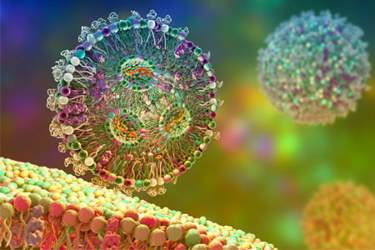New Hope For Neuronal Diseases With Polymer Nanoparticle-Based Gene Therapy

Battelle has developed a groundbreaking polymer nanoparticle (PNP) delivery system that enables targeted gene therapy for Neurofibromatosis type 1 (NF1) and other nervous system disorders. NF1, caused by mutations in the NF1 gene, affects 1 in 2,500 births and leads to tumor formation and other complications due to the loss of neurofibromin function. Existing treatments, such as Selumetinib, have limitations, including toxicity and tumor recurrence, highlighting the urgent need for new therapeutic approaches.
Gene therapy offers a promising solution by delivering a mutation-free copy of the NF1 gene to restore neurofibromin function. However, the NF1 gene is too large for conventional viral vectors like adeno-associated viruses (AAVs). Battelle’s PNPs overcome this challenge by providing a high-capacity, non-viral delivery system that stabilizes and protects the genetic payload while minimizing immune responses.
Using the HIT SCAN™ platform, Battelle synthesized and screened 450 unique polymers to identify optimal PNP candidates capable of delivering the full-length NF1 gene to Schwann cells, the origin of NF1 tumors. In vitro studies demonstrated partial neurofibromin restoration, and in vivo tests confirmed gene expression in rodent brain regions—marking the first successful delivery of the full NF1 gene to neuronal cells in living models.
PNPs offer significant advantages over viral vectors, including lower cost, higher stability, and safer repeated dosing. This innovation has far-reaching implications for treating genetic disorders affecting the nervous system, potentially paving the way for safer, more effective gene therapies for conditions such as ALS, Huntington’s, and Duchenne muscular dystrophy.
Get unlimited access to:
Enter your credentials below to log in. Not yet a member of Cell & Gene? Subscribe today.
